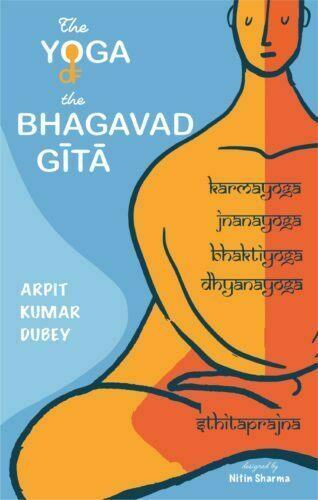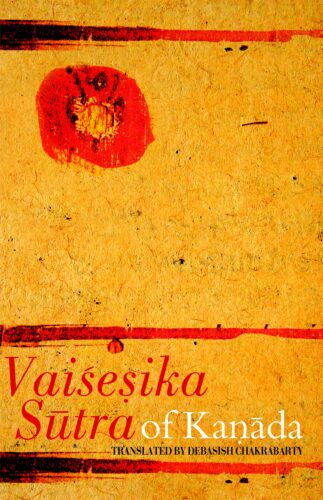Showing 21–28 of 28 results
The Kalacakra Tantra was the last major Tantrik text written in India before the decline of Buddhism. The book has left indelible influence over different regions of Asia in last thousand years of its journey. Apart from the Vimalprabha commentary composed during the mid-11th century, there is no verse by verse commentary available to the general reader. Kumar has attempted translation of the full text from Sanskrit original and has also contributed a new detailed commentary. This book locates mysterious Sambhala and Oddiyana. The book further delves into the chronology of legendary Kalki kings.
The Ramayana has effected incessantly the Indian consciousness for more 2,500 years. Its moral and ethical impact and relevance are par excellence of its poetic beauty and dramatic narrative. It gave a new praxis to the dharmic mores of the Indian psyche. The Valmiki Ramayana as Epic and Dharmasastra: Reading the adikavya as an Ethical Guide is derived from a series of three lectures that Prof. Dr Robert Goldman delivered at the Department of Philosophy, Jadavpur University in 2016 as a visiting professor.
The book, while taking an overview of the Sanskrit epics as poetry, history and science, takes one through the dilemma that Dasaratha faces due to his denying kingdom to Rama and the latter’s going for vanavasa, the ethical and moral challenges that Rama faces in his war with Ravana and others, and in the ethical shift that Rama undergoes from his compassionate and self-sacrificing moral code to a more rigid dharmasastra and arthasastra-oriented mode of royal conduct in the last part of the epic. All this, looking back over the various situations, episodes and responses of the principal characters in the epic drama.
The Ramayana thus functions not only as as a grand kavya and an ithihasa, but also as a dharmasastra and a nitisastra as well.

The Netra Tantra “Tantra of the (Third) Eye (of Siva)”, also called Mrtyujit (Conqueror of Death), is one of the fundamental scriptures of non-dualist Kashmir Saivism or Trika. It is the only Tantra having the Third Eye of Siva as title and theme, and it contains three important chapters on Yoga, relating to three ways of overcoming death.
This book, besides giving an introduction to the Tantra, contains an interpretation of the three chapters; Chapter 1 deals with the Eye of Siva, Chapter 7 with subtle Yoga, and Chapter 8 with supreme Yoga. The same texts are presented in Devanagari, transliteration and translation, including the eleventh-century commentary of Ksemaraja, illustrious disciple of Abhinavagupta. The Appendix contains illustrations of the theme of trinetra from different sources, mainly connected with Kashmir, as well as a comparative study on “The spiritual eye in the Christian mystical traditions”.
This book is an important contribution to the studies on non-dualist Saivism or Trika, and especially to its Yoga.
The Netra Tantra “Tantra of the (Third) Eye (of Siva)”, also called Mrtyujit (Conqueror of Death), is one of the fundamental scriptures of non-dualist Kashmir Saivism or Trika. It is the only Tantra having the Third Eye of Siva as title and theme, and it contains three important chapters on Yoga, relating to three ways of overcoming death.
This book, besides giving an introduction to the Tantra, contains an interpretation of the three chapters; Chapter 1 deals with the Eye of Siva, Chapter 7 with subtle Yoga, and Chapter 8 with supreme Yoga. The same texts are presented in Devanagari, transliteration and translation, including the eleventh-century commentary of Ksemaraja, illustrious disciple of Abhinavagupta. The Appendix contains illustrations of the theme of trinetra from different sources, mainly connected with Kashmir, as well as a comparative study on “The spiritual eye in the Christian mystical traditions”.
This book is an important contribution to the studies on non-dualist Saivism or Trika, and especially to its Yoga.

It vividly and graphically presents the key concepts of the Bhagavadgita while majorly discussing the concepts like atman, Paramatman, jagat, karma-yoga, jnana-yoga, bhakti-yoga, dhyana-yoga, sthitaprajna, sadhakas’ challenges and the ways out.
This volume covers all the aspects of Yoga and self-management discussed in the Bhagavadgita –– a comprehensive text of personal and professional life management and adhyatma-sadhana (spiritual upgradation). What makes the book special is its dialogue format between a guru and his disciple as exactly what we witness in the Bhagavadgita as between Sri Krsna and Arjuna.
It vividly and graphically presents the key concepts of the Bhagavadgita while majorly discussing the concepts like karma-yoga, jnana-yoga, bhakti-yoga, dhyana-yoga, sthitaprajna, and seven keys of self upgradation, which leads towards Health, Happiness and Harmony, challenges and the ways out.
This book will help in the making broader understanding of the concepts and philosophy of the Bhagavadgita, which transcends time and space, to register with the new generation readers and thereby emulate and practise the varied forms of Yoga.
Vada, meaning debates, dialogues, discussions, was the quintessential of Indian spirit, enabling and promoting the growth of different philosophical and knowledge systems of India. It percolated deep into our mindset and enriched the moral, ethical, religious and sociocultural edifice of anything that was essentially Indian in nature. As continuation of Anvikshiki from the bc era, vada helped thrive Indian traditional knowledge systems. It subsists on diversity and its tradition envisages pluralism.
Most of our Sanskrit works, covering a wide gamut of knowledge systems, are structured in the techniques of debate. This reality applies not only to the philosophical writings, but to Indian medical systems (Ayurveda), Arthashastra of Kautilya and Kamasutra of Vatsyayana as well. Even great epics like Ramayana and Mahabharata are no exceptions.
Vada culture involved verbal duals, attacks and even violence of speech, and all major religious systems — old or modern — were parties to it. This book also elucidates how vata was vital and critical for the growth of our socio-political fabrics. It shows how some of the major conflicts in philosophical systems were centred around karma, jnana, choice between violence and non-violence, pravritti and nivritti. It also presents the manifestations of vada on a vast canvas during the nineteenth and twentieth centuries. Modern spiritual and religious gurus like Ramana Maharshi, J. Krishnamurti and Vinoba Bhave were men of dialogues. Our scholars have applied the varied techniques of vada against the philosophical and scientific systems of the West to prove them correct.
This collector’s issue should enthrall a wide audience of philosophers, scholars and believers in Indian knowledge systems.

This book presents a lucid English translation of the Vaisesika-Sutra of Kanada, termed the earliest exposition on physics in Indian philosophy and the textual basis for the Nyaya-Vaisesika and Navya-Nyaya systems of thought. The translation retains the feel of the original sutras even while conveying the intended meaning accurately and with clarity.
Kanadas Vaisesika Sutra, the textual basis for the Nyaya-Vaisesika system and the later Navya-Nyaya system, may be termed the earliest exposition on physics in Indian philosophy. It presents one of the earliest discussions on the idea of atomicity and on the true nature of knowledge as comprising the categories of dravya (substance), guna (attribute), karma (action), samanya (generality), visesa (particularity) samavaya (inherence) and abhava (non-existence). This book presents the original Sanskrit text of the Vaisesika Sutra along with its Roman transliteration and a translation in the English language. The lucid translation is a scholarly attempt to retain the feel of the original sutras while conveying the intended meaning accurately and is easy to comprehend owing to many special features. Additional words are added in the translated text for the benefit of syntax but they are placed in parenthesis. The translated text has sub-titles that aid in simplifying the arguments by grouping the sutras. Besides, footnotes are provided to explain technical terms and concepts in the original Sanskrit. The book, published under the Shastra Group of Centre of Linguistic and English at Jawaharlal Nehru University which had earlier brought out the Yogasatra of Patanjali, will prove useful to all researchers and students of ancient Indian philosophy.
Sree Narayana Guru (1856–1928), an enlightened seer, represents Vedanta as a Science of Consciousness or pure Epistemology. This book deals with Guru’s epistemology and shows how it can eliminate many of the problems in philosophy and life.
The Guru conceives Consciousness or Arivu as the one all underlying Reality that assumes the form of everything in the world, both mind and matter.
Epistemologists are usually either idealists or realists, but the Guru is neither. To him there is no need to place one above the other since they are two manifest forms of one Consciousness.
Many eminent persons have tried to solve the problem of consciousness, but could not succeed because they were not ready to consider man as a pure being and the essence of the world as Consciousness.
To the Guru, in every event of knowing there is the coming together of subject, object and also the function of knowing. These three are Consciousness in essence. What we really need is awareness of it. All kinds of divisiveness, conflicts and crises can be solved through an awakening of the inner consciousness of man which is non-different from the one all underlying Reality titled Brahman, Atman or Consciousness.
दार्शनिक समीक्षा का सत्याग्रह नामधेय यह कृति मेरे द्वारा दिए गए व्याख्यानों का एक परिमार्जित संग्रह है। यह सभी व्याख्यान भारत के प्रतिष्ठित शिक्षा संस्थानों में 2017-18 के दौरान भारतीय दार्शनिक अनुसन्धान परिषद् के अतिथि आचार्य (विजटिंग प्रोफेसर) के रूप में दिए गए थे। ऐसे संग्रह-ग्रन्थ में विचार केन्द्रित अन्विति नहीं होती, और यदि होती भी है तो उसे विचारक-केन्द्रित अन्विति के रूप में ही परखा जा सकता है। विचारों में विचारक-केन्द्रित अन्विति अनुप्रास युक्त पदों से निर्मित एक वाक्य की तरह होती है जिसके अलग-अलग पद आनुप्रासिक सौन्दर्य के साथ अर्थ का अभिधान करते हैं। इसी प्रकार का आनुप्रासिक सौन्दर्य एक व्यक्ति के बहुविध वैचारिक उपक्रमों की सार्थकता होती है। दार्शनिक समीक्षा के रूप में समाकलित इन सभी व्याख्यानों की अन्विति उनके सत्याग्रही होने में है। विचार का सत्य विचारों के मूलगामी अर्थ को उद्घाटित करना है। समीक्षा जब इस उद्देश्य के साथ प्रवर्तित होती है तभी “सत्याग्रह” उसका विशेषण बनता है।
| There are no products |